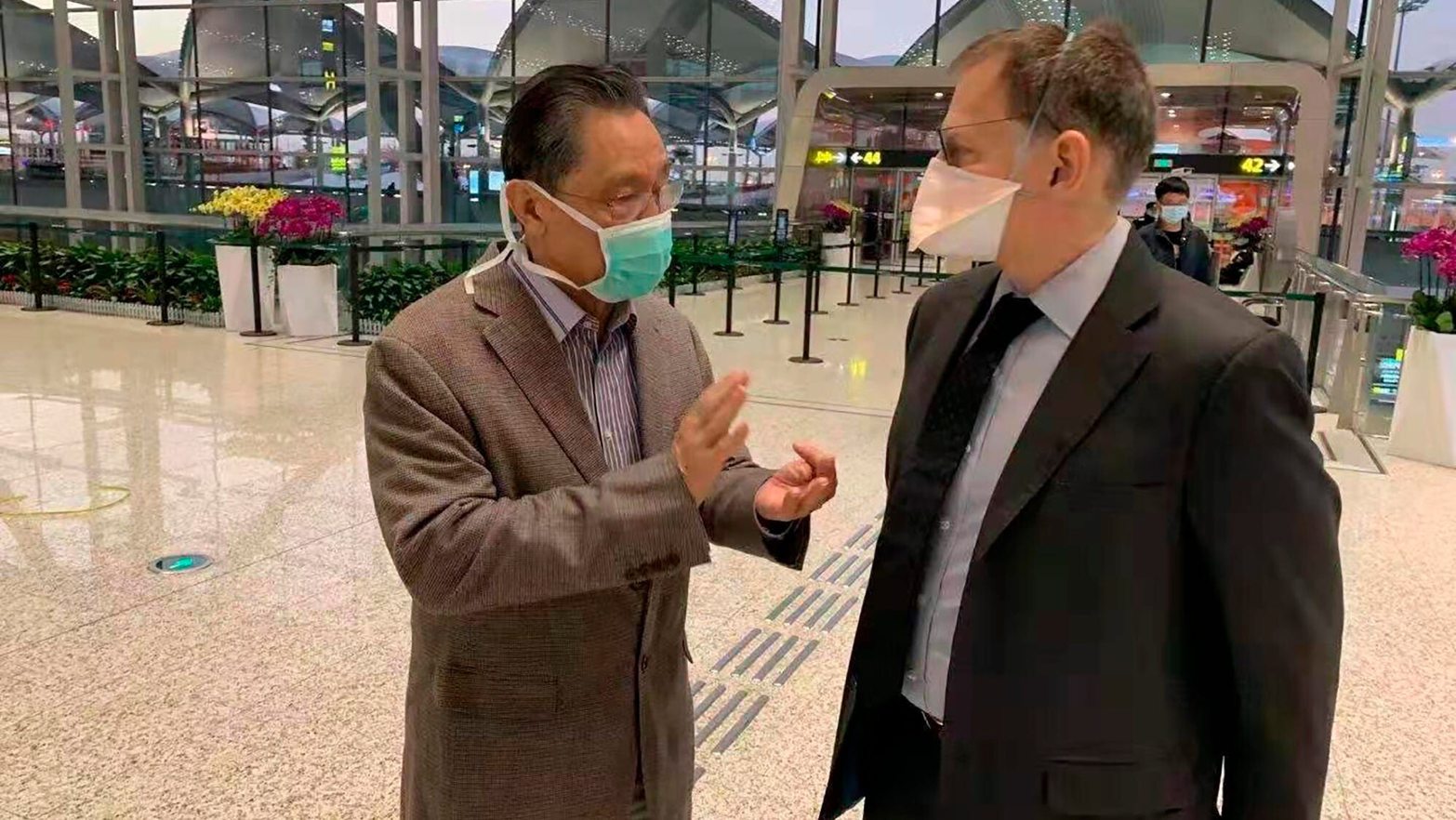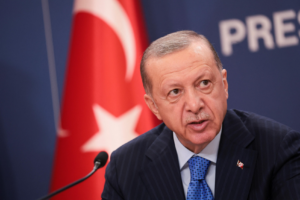On Jan. 1, 2020, public health officials in the United States woke up to the news of a strange new virus in China.
They didn’t know what to make of it, but at Columbia University in Manhattan, Dr. Ian Lipkin was already nervous.
Lipkin, a virologist, had spent his career studying pathogens and hoping to prevent the arrival of new ones.
More: ‘Contagion’ medical adviser Dr. Ian Lipkin has coronavirus: ‘If it can hit me, it can hit anyone’
He had long pushed for closing the kind of live animal market that might have been the source of what became known as SARS-CoV-2. He would later argue that a low-security lab in Wuhan had no business studying dangerous pathogens ‒ “end of story” ‒ whether or not it was the cause of the pandemic.
Now, on the fourth anniversary of that fateful time, Lipkin and his team at the Mailman School of Public Health are among a number of groups worldwide working to prevent the next global pandemic.
They have developed a system for quickly analyzing viruses, bacteria and fungi ‒ known and unknown ‒ found in patients.
If hospitals in Wuhan, China, had had this system in late 2019 when the first patients started appearing with respiratory symptoms, they could have analyzed blood or the gunk patients were coughing up and within hours realized they were dealing with something new and dangerous.
More: Five takeaways from the WHO’s report on the origins of the pandemic
“This method, these assays are so simple to use and so inexpensive that you could do continuous surveillance in clinics, looking at blood, looking at sewage, looking at respiratory disease, and would have picked it up and known there was something novel circulating immediately,” Lipkin said.
“It would actually give us what I like to describe as a global immune system.”
The eight countries that have adopted this surveillance system, called GAPP, for the Global Alliance for Preventing Pandemics, have agreed to make their information rapidly public.
Such early information and quick public notification should allow another outbreak to be stopped before it spreads across the world.
And there will be a next one.
More: The next pandemic could spring from the US meat supply, new report finds
Nita Madhav, head of epidemiology and risk analysis for Concentric, the biosecurity unit of Ginkgo Bioworks, recently published an analysis with the Center for Global Development showing a 2% to 3% chance of another global pandemic every year for the next quarter-century. That means there’s a 50-50 chance we’ll have another one before the year 2049 ‒ the year Taylor Swift turns 60.
“These events are going to happen,” she said. “They’re not as rare as people tend to think.”
The in-between times
Gingko is trying to prevent that eventuality by keeping a lookout for pathogens carried by travelers.
Under contract with the federal government, the company now analyzes airplane wastewater at seven international airports, including JFK in New York, and LAX in Los Angeles looking for up to 30 pathogens that airplane travelers might leave behind. They are also building biosecurity programs in Rwanda, Ukraine, Qatar and Panama.
Like others, Gingko wants to get a handle on what viruses are circulating in “normal” times, too.
“Part of the solution is to have systems that are constantly operating, constantly monitoring,” Madhav said. “We’ll be able to establish baselines and get a better idea of what’s out of the ordinary.”
One of the keys to stopping the next pandemic, Madhav, Lipkin and others said, is putting in place processes that will be useful at times that aren’t crises. Otherwise, it’s too easy for governments and others to cut funding when the outbreak ends.
Even with COVID-19, which was so recent and disruptive that it should be memorable, the world is suffering from what New Zealand public health official Sir Ashley Robin Bloomfield recently described to a gathering of public health officials as “collective global amnesia with rapid onset.”
Most of the money for COVID-19 has come to an end. Officials have moved on. The public doesn’t want to hear any more about pandemics.
Madhav said the U.S. government recently renewed Gingko’s contract, but biosecurity infrastructure in general lacks sustainable funding.
“Do we keep the systems that have been built and put into place during COVID, do we sustain them, or do we forget all the lessons and let everything be dismantled?” she said. “You can guess what side I’m on.”
Working toward a solution
Lipkin’s team has provided three-week trainings for public health workers from Mexico, Liberia, Mali, Nigeria, Bangladesh, Zambia, Zimbabwe and Germany, teaching them how to use tools to rapidly identify pathogens by their genetic sequence.
The idea is to build expertise in home countries rather than needing Americans to parachute in when problems are detected, which takes too long and smacks of colonialism.
“This is really about Zambians helping Zambians in Zambia,” said Ken Wickiser, a clinical biochemist and the GAPP program’s administrative director. “They get to decide how they want to deploy and employ this technology. Then we transform into collaborators and cheerleaders.”
So far, the program has revealed measles cases where they were not expected and polio in wastewater, which allowed countries to respond faster and more efficiently than they would have otherwise, Wickiser said.
Countries are now coming to the GAPP program asking for training, he said, and the program is expanding in Africa, the Americas, Central Asia and the Pacific.
“Every time someone new asks me for assistance, asks me for training, that tells me we’re doing something right,” said Wickiser, who was associate dean for research at West Point when the pandemic broke out.
His uncle caught COVID-19 in a hospital in 2020 and died, motivating Wickiser to leave “a very comfortable, meaningful job. I wanted to be part of the solution.”
Building a global immune system
Al Ozonoff likes the metaphor of building a global immune system.
The lab he works in at the Broad Institute of Harvard and MIT in Cambridge, Massachusetts, is part of it, too. He’s the U.S. director for the Sentinel program, which, with collaborators in Nigeria, tracks hemorrhagic fevers like Ebola and Lassa.
In some ways these viruses pose less of a global threat than respiratory viruses like SARS-CoV-2, which causes COVID-19.
The biggest Ebola outbreak ever, from 2014 to 2016, killed more than 11,000 Africans but was passed to only two people on American soil, both of whom recovered. Unlike with COVID-19, people with Ebola aren’t contagious until they show symptoms, so they can be isolated and treated with people in protective gear to avoid passing on their virus.
But nothing seems possible until it actually happens, he said, “and then we’ll wish we had done more.”
Plus, the risk from these viruses is likely increasing, because climate change and other factors are driving people into more frequent contact with animals that carry hemorrhagic fevers.
“We should have learned from past outbreaks, but we haven’t enacted those learnings,” said Ozonoff, also chief of staff of the Sabeti lab at the Broad, an associate professor of pediatrics at Harvard Medical School and a faculty scientist within the Division of Infectious Diseases at Boston Children’s Hospital.
Mpox (formerly known as monkeypox) was also considered a low-probability global event before it spread out of Africa a year and a half ago, infecting more than 31,000 Americans and killing 55, he noted. If more had been done to stop it when it was circulating for years in places like Nigeria, it never would have spread as far as the United States.
But mpox also showed the global immune system has started working.
Because of collaborations begun during COVID-19, more than a dozen African countries came together to sequence the genetics of mpox as it circulated across their continent during the recent outbreak, Ozonoff said.
Like the human immune system, the global one isn’t centralized. Our body’s nervous system is controlled solely by the brain; the immune system involves the bone marrow, spleen, thymus, tonsils, mucous membranes and skin.
Similarly, there isn’t one central body controlling all the efforts to prevent the next pandemic ‒ and Ozonoff says that’s a good thing.
Technological solutions
It’s an exciting time to be in the surveillance business, Ozonoff and the others said.
Technology first made it possible to keep track of an incredible amount of data and now, the falling cost of genetic sequencing is making it increasingly feasible to track pathogens as they move through a population.
That’s “going to be foundational for infectious disease surveillance for the rest of this century,” Ozonoff said. “Generally, the more sequencing data we have, the more robust the response can be if and when it’s needed.”
These kinds of advances might be able to change the way we fight all diseases going forward.
“Humanity has decided that a certain level of illness is the cost of doing business and doesn’t really question that,” Gingko’s Madhav said. “We’re at the point now where technology can really change that.”
Ozonoff compared it to a weather forecast.
It wasn’t that long ago that forecasters couldn’t predict much into the future. Now they can see a hurricane coming days in advance, which allows people to prepare, strengthen natural defenses and evacuate ahead of the storm.
“That’s really our goal” with pandemic preparedness, Ozonoff said. “The more we can develop our capabilities to understand what has happened to predict or forecast what might happen, the better prepared we will be when something does happen.”
Karen Weintraub can be reached at kweintraub@usatoday.com.




